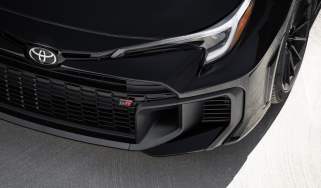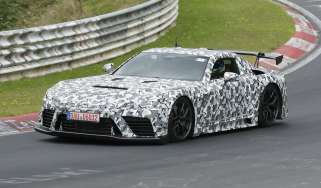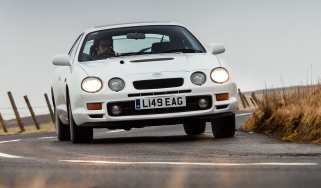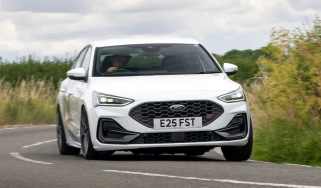The automotive takeover that could’ve killed Porsche, Honda and the BMW X6
In a parallel universe, one particularly shrewd brand partnership reigns supreme
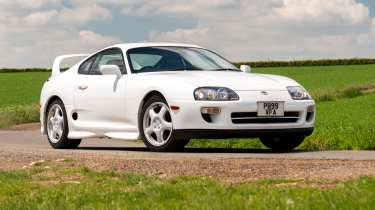
August 1983 – Toyota announces that it has bought Lotus. The two companies have been co-operating for over a year, with Lotus getting Toyota parts for the Excel and Toyota getting Lotus engineering know-how for the Supra, but few expected this buy-out. Pundits are intrigued, purists are aghast, the entire car industry has just entered a new era. Over the next two decades every other car company will wither and die in the face of a partnership that can provide two simple yet desirable things: Toyotas that drive like Lotuses and Lotuses that work like Toyotas.
Ford is first to falter, wrong-footed by the world-beating manners of the ’89 Starlet, which makes the Mk3 Fiesta of the same year feel flat-footed and useless. Toyota got Giugiaro’s number from Lotus years ago, so when the ’91 model-year Corolla and Camry arrive in stunning Italian-tailored shells covering keen Lotus chassis, they’re ready to crush the hopeless Mk4 Escort and unimaginative ’92 Taurus, turning Uncle Henry to toast. GM goes the same year, its American market share decimated by Toyota’s brilliant everyday sedans, while its flagship Corvette is humiliated by the Ital-styled, Lotus V8-powered Supra IV.
> Why the Vauxhall Astra should have been given a different name
The financial crisis of the early ’90s isn’t kind to many car makers, most of the Japanese home teams wilting as the bubble bursts, yet Toyota, having a greater global footprint, weathers the storm. Volkswagen isn’t so lucky, listing for years before finally going under, blaming harsh economic realities, though the fugly Golf 3 was no help in the face of the crisp Euro Corolla. VAG’s demise is the biggest shock to the German industry since Porsche went pop in 1993, its outdated and expensive range being easy pickings for the beautiful, bulletproof and temptingly priced coupes and sports saloons from Hethel.
Few could have guessed that even Ferrari would eventually tumble, its corporate confidence shot to pieces by the all-conquering Lotus-Toyota F1 effort. Worse still, as Honda lost its mind trying to confect an Accord to match the handsome and fine-handling Camry, it cancelled the NSX before launch, and with no NSX there was nothing to give Ferrari a wake-up call to make more useable supercars. If only they’d been able to stick around for the jaw-dropping, V12-powered Lotus Essor of ’94, which won multiple plaudits for its power, handling and highly effective demisting.
Lexus came along in 1989 and that was the start of BMW’s downfall. The beginning of the end for Mercedes too. Volvo, Fiat, Renault, they all fell because, no matter what you were looking for, no one could offer it better equipped, better looking and more reliable than Toyota/Lotus. Within 15 years they were all gone.
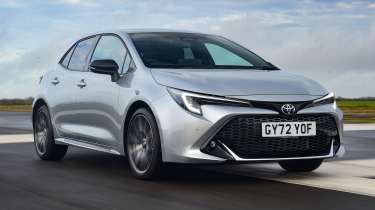
Then one day Toyota realised there were too many types of cars. Not types of other cars, they were history, but types of Toyotas. And Lotuses. So the company decided to streamline. Fewer models, less complexity, a more straightforward assembly process for all those factories in all those countries staffed by all those people who used to work for all those other cars companies. Lotus slimmed down as well, going back to basics with a new, pure driver’s car called the Elise, which gradually became the bedrock of its 21st-century range. It did well.
So well, in fact, that Toyota started to wonder if it could pull the same trick. Did anyone really need a Camry or a Celica or any kind of Lexus? Was the solution to the new car needs of everyone in the world really just a Corolla? It turned out, it was. There were too many cars and too many types of car until the finest minds at the world’s one remaining car company alighted on a simple truth, that there are, in fact, only two types of car buyer in the world: those who are interested and those who just want a reliable, nice-looking car to get them where they need to go. For people in the second category, all their needs could be met by a Corolla. If you liked driving, you could have an Elise (with a Corolla estate at home for family duties). The Hilux stayed in low-volume production for those who really needed 4x4 but, since the SUV boom of the ’00s would never happen, there wasn’t much call for it. Most people were happy with their Turin-styled, Norfolk-tuned Corolla. Except for people like us; we had our Elises (and longer, more practical Elise +2s).
This might sound far-fetched. It might sound a little daft and restrictive and the kind of thing that would render this very magazine pointless, or at least extremely thin and repetitive. No one would want this alternate universe in which car choice was reduced to Soviet levels. But hang on. It might sound boring and ultimately improbable to reduce the number of models and types of car so drastically, but think of the positives: can you imagine for one minute the joy and relief of living in a world without the BMW X6?
This story was first featured in evo issue 311.
